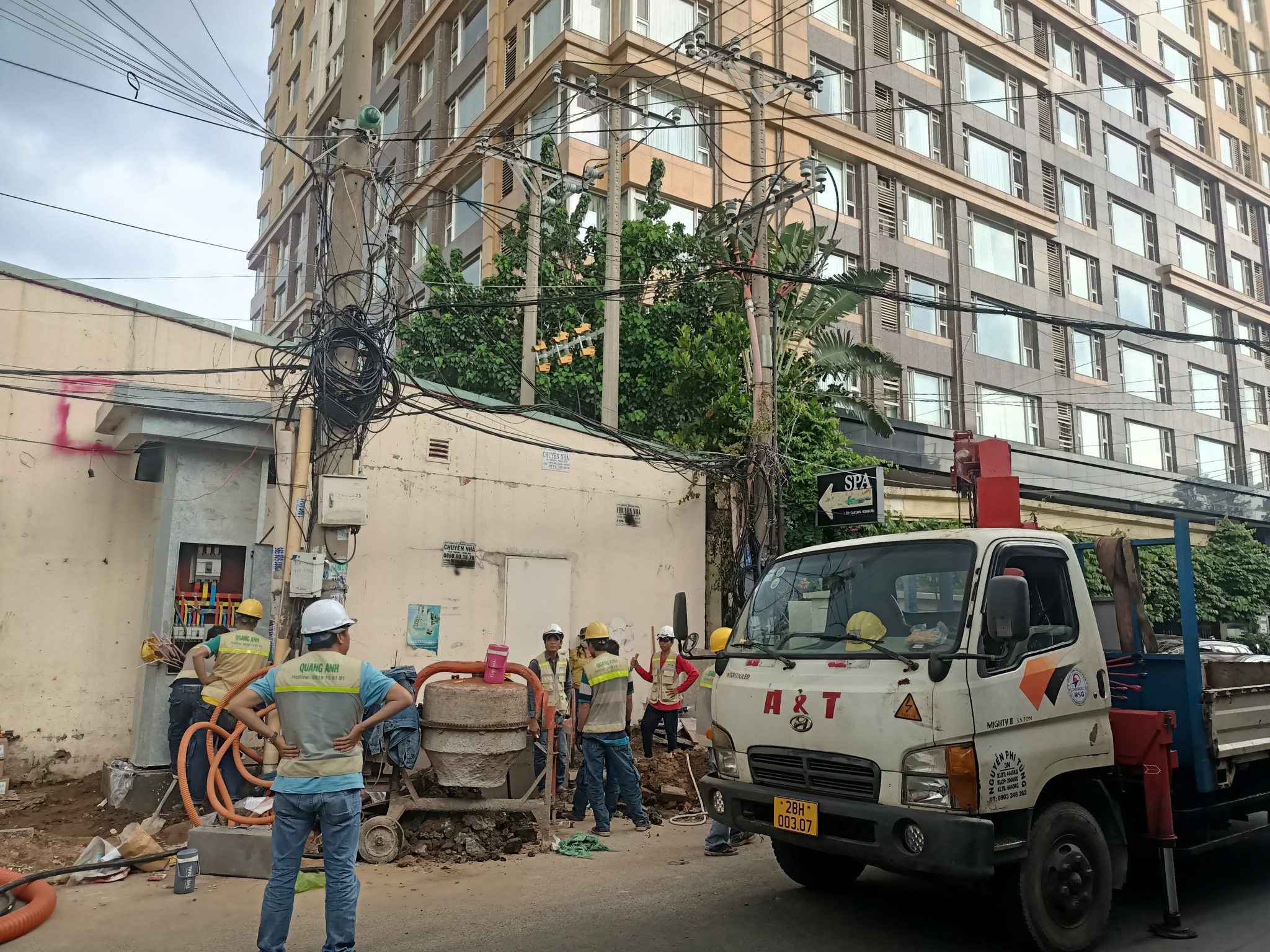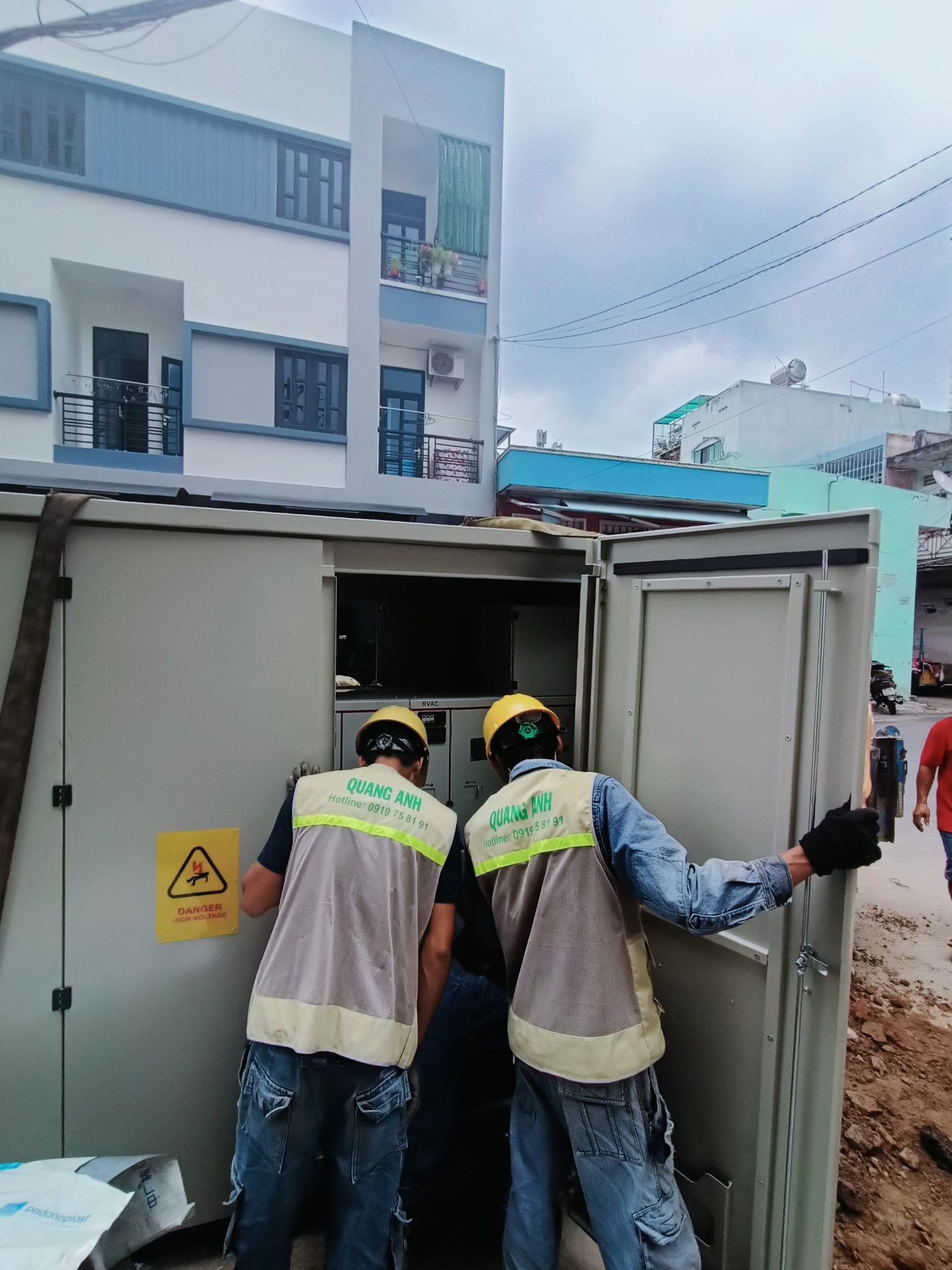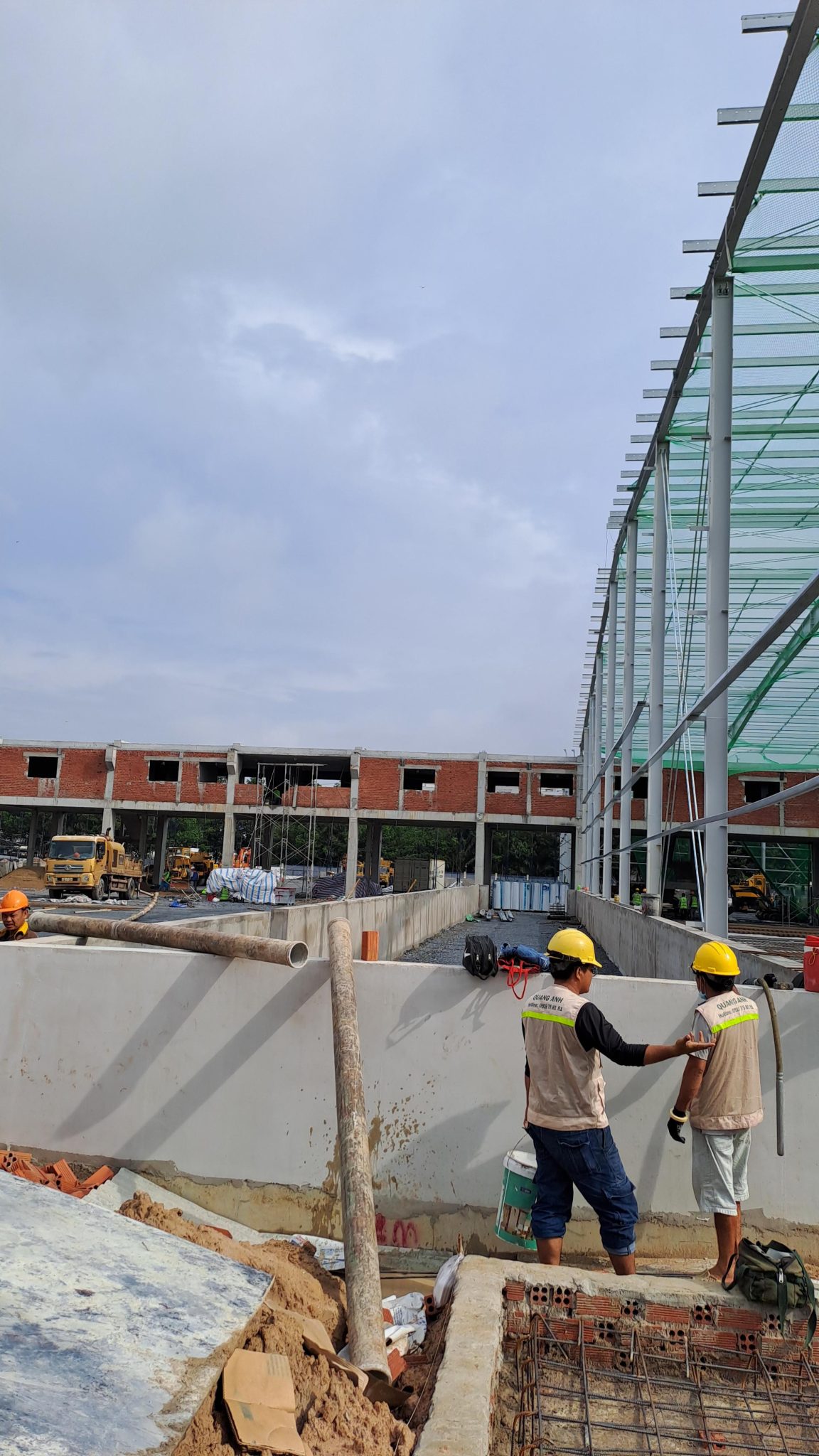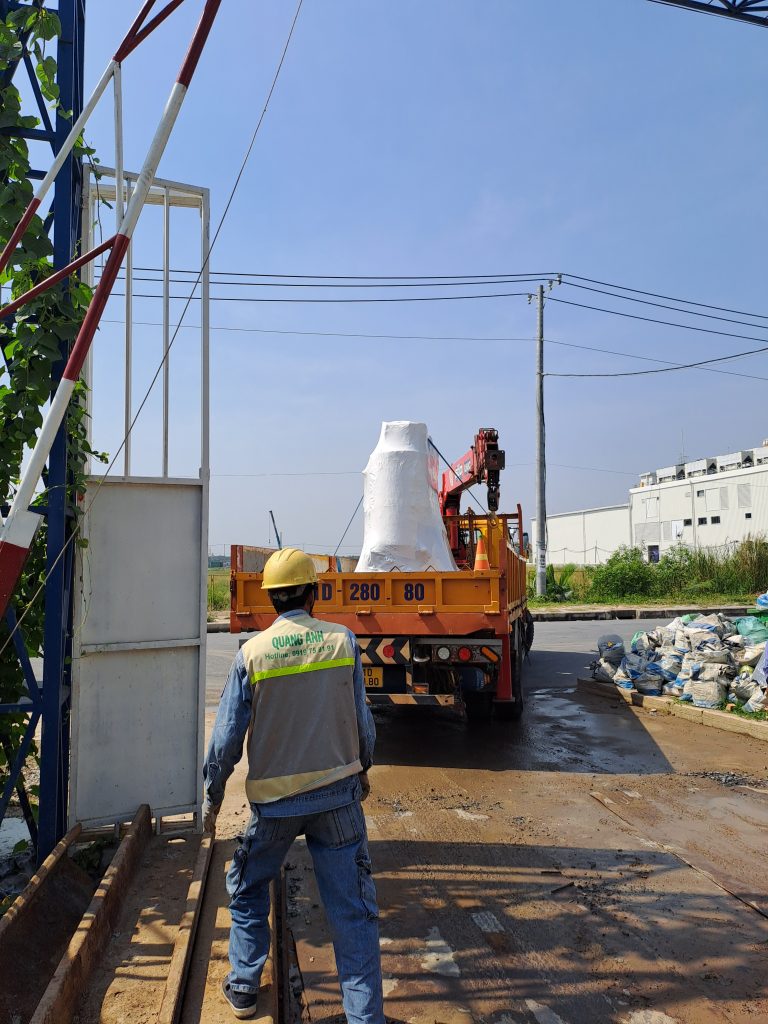News
Substation for Factory: Overview and Common Types
Substation is an essential static electrical device in factories that helps transmit and convert electricity, ensuring the internal electrical system operates safely and efficiently.
Definition and Role of Substation in a Factory
A substation is a static electrical device that helps convert voltage between different electrical circuits through electromagnetic induction. They play a crucial role in converting high voltage from transmission lines to the usable voltage levels within a factory. This ensures not only safety but also optimizes the operational efficiency of electrical equipment. Industrial substations distribute power to production areas and auxiliary systems, while also protecting the electrical system through circuit breakers.
Main Functions of Substation in a Factory
Substations play an indispensable role in ensuring the effective and stable operation of the factory’s electrical system. The main functions of the station include:
- Voltage Conversion
- Step-up/step-down: Substations perform voltage conversion from high levels like 110kV – 220kV down to lower levels like 22kV – 35kV or below 1kV, meeting the specific energy needs of the factory. This optimizes power transmission and reduces losses during transportation.
- Transmission optimization: When power is transmitted at high voltage, energy loss is significantly reduced, thereby enhancing the overall efficiency for the factory.
- Power Distribution
- Multi-line power supply: Distributes electricity evenly to production lines, auxiliary areas, and other critical equipment in the factory.
- Grid stability: Substations help adjust and balance the load, maintaining the stability of the power supply.
- System Protection
- Automatic switching: Integrated switching systems, such as MCCB or ACB, ensure effective circuit disconnection during overload or short-circuit events.
- Lightning surge protection: Uses devices to guard against voltage surge conflicts that can cause damage.
- Operation Support
- Emergency power backup: Substations incorporate backup systems, including UPS and standby generators, to ensure continuous power for critical production processes.
- SCADA system integration: Working closely with business leaders, SCADA allows remote monitoring and management of the factory’s power grid automation.
Specific Design Requirements of Substations
To meet safety and efficiency standards, substation design needs to consider the following factors:
- Optimal location: Substations should be placed at the load center to limit conductor lengths and unwanted voltage drops.
- Safety standards: Strictly adhere to international and national standards such as IEC and TCVN regarding insulation, safe distances, and explosion prevention.
- Expandability: Plan for a minimum substation reserve capacity of 20-30% to meet future growth demands.
Common Types of Industrial Substations
Industrial substations are classified based on input and output voltage as well as specific applications:
- Intermediate Substation: Receives voltage from 110kV – 220kV and reduces it to 22kV – 35kV, typically used to connect with the national transmission grid.
- Distribution Substation: Specialized in lowering voltage from 22kV – 35kV down to 0.4kV – 15kV, serving the internal needs of the factory.
- GIS Substation: With voltage from 72.5kV to 550kV, suitable for large-scale factories or used in space-restricted environments.
The focus of the factory’s electrical system is the substation, not only helps maintain efficiency but also ensures all production processes run smoothly and safely.

Classification of Substations for Factories
In factories, substations can be classified by voltage level. Intermediate Substation converts from 220kV down to 35kV, serving large areas. In contrast, distribution substations with an output voltage from 0.22kV to 0.4kV are usually placed near the final power consumption area to minimize power loss. 35kV and 220kV substations are common depending on the factory’s scale and power demands.
Substations play an important role in the power supply system of factories, where they are classified by various criteria to ensure maximum operational efficiency.
- Classification by voltage:
- Ultra high voltage: Above 500kV, for large power transmission.
- High voltage: 66kV, 110kV, 220kV, and 500kV, used for power transmission and distribution.
- Medium voltage: 6kV, 10kV, 15kV, 22kV, and 35kV, suitable for industrial zones.
- Low voltage: 0.4kV and 0.22kV, for direct supply to consuming equipment.
- Classification by function and position in the electrical system:
- Intermediate substation: Receives power from 110kV – 220kV, converts it down to 22kV – 35kV for distribution, used in large-capacity systems.
- Distribution substation: Receives medium voltage, lowers it for factory equipment or residential areas.
- Classification by structure and installation method:
- Closed substation: Equipment housed in enclosed rooms, suitable for urban areas due to safety and noise reduction.
- Outdoor substation: Suitable for intermediate stations with large capacity, requiring large spaces.
- Kios substation: Enclosed box station, easy to install and transport, used in areas with high safety requirements.
The choice of substation type depends on the technical characteristics and specific needs of each factory, including factors such as capacity, operational environment, and required safety level.

Factors for Choosing the Right Substation
When selecting a substation for a factory, it is important to consider power and voltage consumption. The type of station should also be considered depending on the environmental conditions and design of the factory, such as closed or outdoor substations. Safety is a crucial factor, requiring the installation of switchgear systems and protection devices. The installation location is also significant to reduce installation costs and power loss, requiring proximity to the main power source and consumption area.
Power Demand
- Required capacity: The chosen substation should have the appropriate capacity for the total electrical load of the system. This is a determining factor for the scale and transmission capability of the substation.
- Substation size: The scale of the substation needs to correspond to the amount of capacity it needs to serve. For instance, applications with voltage above 500kV require ultra high voltage.
Phase Number
- Type of current: The substation must fit with the single-phase or three-phase electrical system, depending on the specific project requirements.
Input and Output Voltage
- Appropriate voltage: Correctly determining the input and output voltage prevents equipment failure and reduces fire hazard risks.
Operating Frequency
- Standard frequency: Substations typically operate at 50 Hz or 60 Hz, depending on regional regulations.
Efficiency and Power Factor
- High efficiency: Substations need to have a high energy conversion efficiency to ensure effectiveness and reduce energy loss.
- Power factor: Reflects the ability to efficiently transfer energy, a crucial factor to consider in installation design.
Design and Location
- Installation location: Chosen to ensure safety, optimize installation costs, and facilitate maintenance, minimizing power loss.
- Substation type: Can choose indoor or outdoor substations, depending on the project’s specific conditions.
Fire Protection
- Safety system: The substations need to be equipped with complete fire protection systems, especially important in high-risk areas.
Technical Standards
- Compliance with regulations: Compliance with technical standards and safety regulations is the foundation for a stable and secure electrical system.

Substations play a crucial role in ensuring efficient power distribution and usage in factories. Choosing the right substation not only improves production efficiency but also enhances security and reduces operational costs for the business.
Contact QuangAnhcons at Hotline: +84 9 1975 8191 for optimal substation design and installation consulting for your factory.
QuangAnhcons specializes in providing substation design and construction services for factories, ensuring maximum performance and safety with modern technical solutions.

 Tiếng Việt
Tiếng Việt 简体中文
简体中文 Deutsch
Deutsch 日本語
日本語 한국어
한국어 ไทย
ไทย Русский
Русский Français
Français
